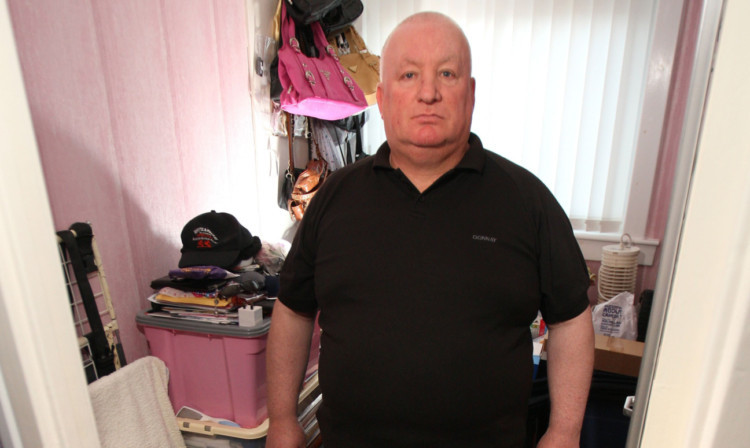The UK Government is seeking leave to appeal against landmark rulings exempting tenants from the controversial “bedroom tax”.
The Courier has learned that the Department of Work and Pensions does not accept the view of top QC Simon Collins that size matters when it comes to defining a bedroom.
It maintains the opinion that if a room can accommodate a bed, then it is a bedroom.
The decision was met with disappointment but not surprise, with critics claiming the Government would do anything to save its policy.
Following groundbreaking test cases in Kirkcaldy last month, Mr Collins ruled that size and usage should be taken into account when deciding what consitutes a bedroom.
In a submission which had the potential to open the floodgates for thousands of appeals across the UK, the first-tier tribunal judge said a room measuring less than 50 square feet is not a bedroom.
He also stated that a room measuring between 50 and 70 square feet could only be used by a child aged under 10.
The decision on size followed an appeal by Glenrothes man David Nelson, 57, against a 14% cut in his housing benefit because he was deemed to have a spare bedroom.
His case was on the grounds that the room in question measured 66 square feet and was therefore a boxroom and not a bedroom.
Fife Council said last week that it would not contest the decision and was taking legal advice on the position of 2,000 households in the region with similarly sized rooms with a view to exempting them from the spare room subsidy.
However, Mr Rowley said yesterday that the annoucement the Government intended to seek its own appeal and had issued fresh guidance to all British local authorities meant its hands were tied.
“The DWP has issued an urgent bulletin saying that councils can’t take the ruling on size criteria and apply that to any other cases,” he said.
“My view is that anybody who has a room that is below 70 square feet should be looking at reasons for appeal.”
Unlike a first-tier tribunal, the decision of a second-tier judge could set a legal precedent.
Mr Rowley added: “If the DWP lost an appeal to the second-tier tribunal then that would be the precedent to rule out bedroom tax completely for anybody whose rooms fall below the space standards defined by Mr Collins.
“The DWP were probably never going to accept this position so we will need to see what happens at the second tier.
“In the meantime, this bad piece of legislation will continue to cause anxiety and drive people further into poverty.”
Mr Nelson said he would be prepared to fight the DWP at any further appeal.
“The council have already downsized my house to a two-bedroom and as far as I’m concerned it’s a two-bedroom not a three-bedroom,” he said.
“I’m not surprised by what the Government has said because they’ll do anything to find a way out. I’ll be prepared to fight it at another tibunal if it comes to it.”
A spokesman for the DWP said: “DWP will seek to appeal two of the first-tier tribunal cases. Guidance will be issued shortly to local authorities to clarify applying the size criteria and determining whether or not a property is under-occupied.
“Consideration should be the composition of the household and the number of bedrooms as designated by the landlord, but not by measuring rooms.”
The guidance issued to councils includes that landlords must consider a number of factors when determining whether a room is a bedroom, one of which must be whether it’s large enough to accommodate at least a single bed.
